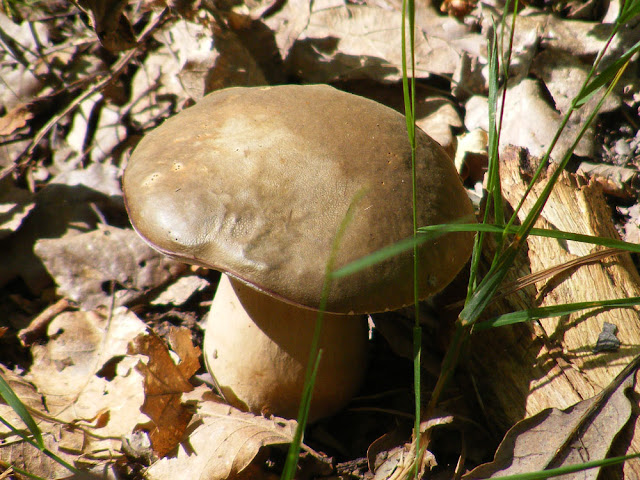Saturday 17 June saw the Association de Botanique et de Mycologie de Sainte Maure de Touraine sallying forth to study grasses, sedges and rushes in the Forest of Montgoger. I did a GSR unit through Birmingham University's Biodiversity Surveying programme ten years ago and thoroughly enjoyed it. I'm a bit rusty now though. I should have knuckled down and identified all the grass species in our orchard, but I haven't. The truth is that for some reason I don't get on nearly as well with grasses as I do with sedges and rushes.
Here are some photos from the day:
Soft Rush.
Soft Rush Juncus effusus (Fr. Jonc diffus) is common and widespread throughout France in damp places. It also occurs just about everywhere else in the world -- the rest of Europe, North Africa, North America, Asia and Australia.
Ants nest in a Hoof Fungus.
A colony of ants had made their home under an old Hoof Fungus Fomes fomentarius (Fr. Amadouvier) that had fallen from a nearby tree.
Smaller Cat's-tail and Flattened Meadow Grass.
Flattened Meadow Grass Poa compressa (Fr. Pâturin à tiges aplatie) is easy to distinguish from other meadow grasses as it has flattened stems that you can feel are not round if you roll them between your fingers. It grows throughout France, Europe, temperate Asia, Marocco and North America on walls and in dry, arid places. Smaller Cat's-tail Phleum pratense (Fr. Fléole des prés) looks like its better known close relative Timothy, but is smaller. It is very common in France, in old natural meadows and pastures, especially on limestone. It also occurs throughout Europe, temperate Asia, North Africa and North America.
Edible Cep.
This year there seems to have been a lot of autumn fruiting fungi having a secondary fruiting during the spring. A species like this Edible Cep Boletus edulis (Fr. Cèpe de Bordeaux) is normally fairly abundant during the autumn, but will usually produce a few mushrooms in the spring too.
Female Banded Demoiselle.
There were numerous female Banded Demoiselle Calyopteryx splendens (Fr. Calyoptéryx éclatant) resting on this European Yew Taxus baccata (Fr. If). They were no doubt avoiding the attentions of males who would be staking out the nearest water course.
Studying a sedge.
Chantal shows Jean how a sedge grows with its leaves in three vertical ranks up the stem. Chantal and I had earlier had a discussion about whether the French word laîche should apply only to Carex spp sedges or whether it could be used for the whole Cyperaceae family. Upshot -- we don't know and can't work it out, but suspect it is probably better to restrict the vernacular name laîche to Carex spp, and refer to any of the other genera as cypéracée if a 'common' name is required.
White Admiral.
This year because of the hot dry conditions that have developed many grassland butterflies are not very abundant, but the forest dwelling species are having a bumper year. There were dozens of White Admiral Limenitis camilla (Fr. Petit sylvain), more than I have ever seen before.








2 comments:
Grasses are not as attractive as flowering plants for many people, but if you look closely some are very nice.
They can be lovely when in flower, but they are not an easy group.
Post a Comment